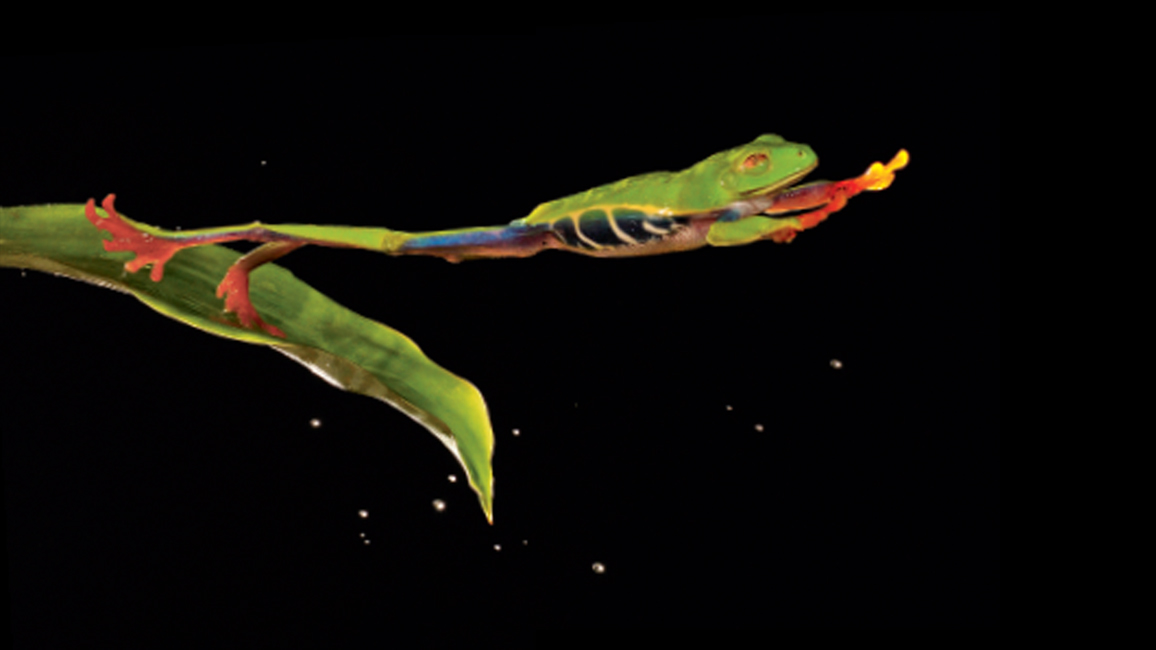
Happy Leap Year
By Gerry BishopThis is a leap year. That means we get an extra day: February 29. This happens only once every four years. So let’s celebrate. How? With some really wild leaps!
WHOA! A baby wood duck leaps from its tree-hole nest. It’s a long way down, but no worries—the little lightweight will bounce like a ball when it hits the ground, where Mom awaits.
Cougars leap for a living, pouncing on prey of all kinds. They also leap to get from one place to another. With their super-powerful hind legs, they can jump 15 feet high or 40 feet forward.
Remember the crazy March Hare in Alice in Wonderland? During mating season, real European hares can act pretty crazy, too. That’s when male hares fight over females by boxing, springing in the air, and just acting nutty.
Sifakas often leap more than 30 feet from one tree to the next. And when on the ground, they bounce, BOING, bounce along on their hind legs, holding their arms up for balance.
LEAP to Get from Here to There!
Like some of the animals you just met, the animals on these two pages often leap to get where they need to go.
Every year, salmon swim hundreds of miles from the ocean to streams to lay their eggs. Along the way, there’s a lot to leap over. Huge waterfall up ahead? No problem!
Red-eyed treefrogs spend most of their time in the treetops. To get from leaf to leaf or branch to branch, they leap! For them, there’s no better way to catch prey or escape predators.
No, this isn’t a wintertime swim party. These Adélie (uh-DAY-lee) penguins are leaping from an iceberg into the sea to go fishing, and that’s serious business. Waiting below could be a huge and hungry leopard seal. Good luck, guys!
Proboscis (pro-BAH-sis) monkeys are best known for their long noses. But their long leaps are even more amazing. To get from tree to tree, they can jump almost 50 feet across or 16 feet straight up.
LEAP to Catch a Meal
For these creatures, dinner often begins with a powerful leap.
Ready, set, leap! In a forest in Southeast Asia, a tiny tarsier (TAR-see-ur) springs into action. Its long hind legs and feet launch it through the air, right toward a fat katydid.
A flying insect is on the menu for this little brown trout. With a swish of its powerful tail, it rockets from the water. Good-bye, dragonfly!
This red fox was just trotting along when a pheasant burst from its hiding spot. The fox leaps at the chance to snatch a meal on the fly. Too bad it ends up catching only a mouthful of feathers.
LEAP to Escape
And for these leapers, a quick jump can be a lifesaver!
VIDEO: WATCH A SPRINGBOK PRONKING
Springboks are among the fastest runners on Earth. But nothing beats a cheetah. So what’s a springbok to do when it’s about to be caught? Spring into the air—sometimes as high as 13 feet!
To escape a predator, a grasshopper can leap 3 feet through the air on its strong hind legs. Not very far, you think? Then think again. That would be like you jumping 90 feet.
A wildebeest (WILL-duh-beest) is no match for a springbok when it comes to leaping. But when crossing a river full of crocodiles, even a little leap could save its life!
VIDEO: WATCH WILDEBEESTS IN ACTION!
LEAP for Other Reasons
Some animals leap to impress a mate or have a little fun!
This Amazon dolphin spent all morning “at work” catching fish, and now it’s time to let loose!
Japanese cranes mate for life. All through the year, the male and female dance, prance, and leap into the air, letting each other know, “You’re the only one for me!”
Dogs leap just for fun! This border collie is looking your way and wishing you a very Happy Leap Year!




















